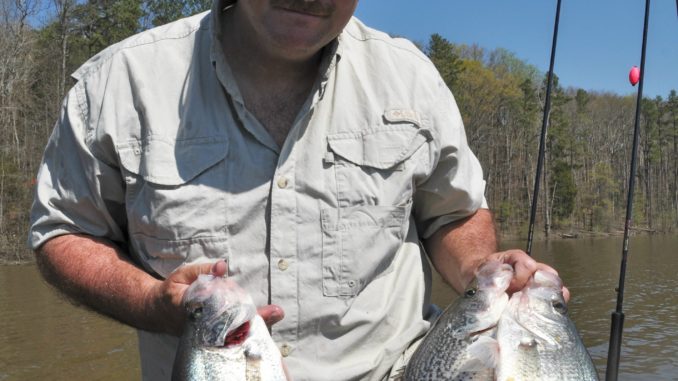
The biggest female crappie head to the shallows of Falls of Neuse Lake from late February through March. Wait for April and you’ve missed it.
Popular opinion among many fishermen is that April is the best month to catch crappie because fish are heading for shorelines to spawn and are susceptible to jigs and live minnows.
It probably doesn’t hurt that the weather in April is pleasant, with the cold weather finally in the rearview mirror — making it more comfortable to head for the lake.
But popular opinion, like so many widespread beliefs, isn’t 100-percent accurate. Oh, you sure can catch crappies in April around shallow cover, but they’ll mostly be male fish, because the big females will have long-ago headed back to deeper water.
If you doubt this analysis, listen to Rod King. The founder and director of the Outdoor Ministry at Durham’s Ridgecrest Baptist Church, King has won more crappie tournaments on Triangle-area lakes than any living soul.
Competitors who once fished against King in Piedmont Crappie Classics often thought that Phil McCarson, the tournament director, wrote King’s name on the winner’s check before the first boat was launched. When King brought home his 50th PCC trophy, he stopped counting — and fishing most tournaments — not because he ran out of places to put his hardware, but because he turned to other pursuits, mainly growing Ridgecrest’s outdoors programs.
Today he fishes for fun in the church’s “Chase the Big Eye Crappie Man” tournaments. If he wins, other anglers draw for his first-place prize. It’s worth noting that six of the eight tournaments scheduled for 2015 are in February and March, with just two in April. That’s significant because King sets the schedule, and he knows when crappie fishing actually is best.
“The biggest 10-stringer of crappie I ever weighed in at a tournament was 19.3 pounds; I caught them Feb. 18 — in 6 feet of water,” he said.
February? When ice and snow storms often smack North Carolina upside the head and the mercury hovers near the freezing mark? Crappie weren’t deep in February?
“Nope,” he said. “And I had the lowest bait running about 3 feet off the bottom and the top rig about 18 inches below the surface. Fish bit the most 1 1/2 feet from the surface.”
This shallow February bite happens, King said, because weather and eons of natural cycles are the keys to finding crappie during late February and March.
King said crappie, like all wild things, are attuned to the angle of the sun, and that makes them head deep in early winter and shallow in late winter and early spring.
“Sunshine is the most important thing,” said King, 53, a former Marine who works for Durham’s CWG Heating & Air. “Crappies are looking to make a transition as the water warms up, heading toward 50 degrees. But that can be a couple weeks early or late, depending on the weather.”
In late February, big female crappie start to move toward spawning flats because the angle of the sun offers a little more light each day and triggers an urge to head for the banks to make deposits that ensure the survival of the species.
“When the sun starts to ascend more and the days get longer, crappie seem to recognize that, and bass as well,” King said. “It’s also kind of like deer in November. The angle of the sun and shorter days trigger the rut, and once it starts, it doesn’t stop, even when the weather changes.”
Because crappie hold at approximately the same depth once they get ready for the spawn, King’s fishing technique is the same for shallow and deep water. Practically, that means his boat sprouts rod-holders from the bow, gunwales and stern.
“When I’m alone, I fish eight lines off the front: 16-foot B’n’M jig poles with 4-pound-test line,” he said. “I like to double-rig (lures) so I can fish different depths on each rod.”
If he has a second angler fishing with him, King uses shorter crappie rods, 10 to 12 feet, off the gunwales or stern and trolls his lures or baits deeper than the bow rods.
“I like shorter poles to get a quicker hook set on deeper fish,” said King, who often mixes his lures, trolling minnows on some rods and soft-plastic curlytails threaded on leadhead jigs on other rods.
“I think you get more bites on live bait than artificials,” he said, “especially if the water’s cool. But I’ll pull both, usually to start out, to see what they like. Sometimes you get more bites on jigs with plastics, but not too often.”
King’s color choices depend upon water clarity.
“If the water is somewhat warm (above 45 degrees) and clear, I like something translucent,” he said. “I want to hold that bait up and see the light shine through it. If the water’s muddy, I don’t want to see through it.”
During March, water temperatures at Falls of Neuse and other nearby lakes usually are what King calls “mid-range” — from 48 to 56 degrees.
“By April 1, the water temperature may be 60 degrees, but in March, it can get that high if you’ve got wind that’s blowing into some of the pockets,” he said. “But you can bet if the water temperature (on a spawning flat) gets to 50 degrees, the big females already are in there, no matter what the air temperature is.”
King likes to fish darker colors when he’s on the upper end of Falls of Neuse in March.
“I’m going to be using black/chartreuse (jigheads) with minnows or black/chartreuse tail (soft plastics),” he said. “If it’s sunny, that’s good, because sunshine makes a chartreuse lure glow.”
Sometimes he’ll head south to other spawning areas. Water on the lower end of the lake tends to be clearer, especially in late February or March.
“If it’s March, I’m using (jigs) that are red, pink or fluorescent red,” he said. “In clearer water, I like a red or sometimes a dark-green tail (for soft plastics),” said King, who is also particular down to the colors of jig eyes. With a black jighead, he likes red, orange, pink or chartreuse eyes. “But most of the time, I like minnows on a naked jig because they’re natural.”
One of the neater aspects about slow-trolling minnows or jigs is the possibility of hooking a lunker bass.
“March is when the female bass get active at Falls, and you can catch monster bass,” he said. “They’ll put a bend in a 16-foot crappie pole.”
Although a lot of fishermen prefer 1/32- to 1/46-ounce jigs, King goes heavier because he wants to control the depths at which his jigs and minnows run while he’s trolling.
“I want them hanging straight down, as much as possible,” he said. “That’s hard to do with real light jigs.”
To accomplish that, he chooses 1/16- and 1/8-ounce jigs. Most of the time in deeper water, he pulls tandem rigs, tying one jig to the eyelet of another.
His 1/8-ounce Cabela’s jigs feature round heads, while King makes his own 1/16-ounce jigs, the “Big Eye” models. They resemble an airplane fuselage with large eyes. Each Big Eye jig also has a rattle inside.
“I tie on the smaller jig on top, then the 1/8-ounce jig below when I’m fishing in tandem,” King said.
He likes a 1/8-ounce round-head jig about a foot beneath a Big Eye jig. His favorite way to fish them is to tip one with a live minnow and one with a curlytail jig. He usually buys 12 dozen minnows for a typical day’s fishing.
“When the minnow on the Big Eye shakes, the rattles give off noise, and I think it attracts fish,” King said.
The setup is perfect for deeper water.
“You can’t fish (tandem rigs) in shallow water, because you’ll get too many hang ups,” said King, who trolls single jigs when he’s in 5 feet of water or less.
“The reason I do that also is you don’t want to fish beneath crappie,” he said. “Crappies are always looking up. If you’ve ever looked at them in an aquarium, they’re always kind of tilted with their eyes looking up.
“When they’re stopped or in a feeding mode, they’re looking up, and they won’t go down, even in 3 feet of water, to get a bait. So you want to keep your baits above them, whether you’re in the back of a creek or in the middle of the lake.”
Once he reaches a fishing area, King lowers his trolling motor and sets the speed at 0.5 mph.
When he’s fishing Falls of Neuse Lake, King likes Lick, Little Lick and Ledge creeks. The three creeks are near the mid-lake area, but all three get good amounts of sunlight in early spring. King concentrates on the northeastern sides of creeks and coves because they get the most spring sunlight.
The sparks that set the crappie migration on fire during February and March will be warm fronts, sunshine and a southwest wind, King said.
“Fishing depends on weather — how much it warms up,” he said. “Say your fish move in during February. The 19-pound stringer I caught in February came after a week of mild weather and southwest winds. You can catch ’em near the banks then.
“But if a cold front blows in, which it did, the barometer dropped like crazy, and the next day, those fish were gone.”
Most anglers would have given up at that point, but King had a good idea where the fish had relocated.
“They were right in the middle of the lake and at the same depth, which is a surprise to most people,” he said. “But they want to stay in warm water. They don’t want to go back to cold water.”
King has studied and caught crappie long enough to know February and March are the top months at Falls of Neuse for landing slabs.
“People say, ‘Go crappie fishing when the dogwoods bloom,”’ he said. “But two or three days after the (water temperature) hits 50 degrees, the big females will be gone — a week at the most.
“Watch for south winds, sunshine and the water temperature hitting 50 degrees. It doesn’t matter when, February or March, if you want to catch the biggest crappie of the year.”
DESTINATION INFORMATION
HOW TO GET THERE — Falls of Neuse Lake runs rough west to east, about 5 to 10 miles north of Durham and Raleigh. Popular public ramps are Hickory Hill and Ledge Rock on the upper end of the lake, and Upper Barton Creek on the lower end. For locations, visit www.ncpaws.org/wrcmapbook/baa.aspx
WHEN TO GO — From mid-February through March, the majority of big female crappie will move shallow to spawn.
BEST TECHNIQUES — Slow-trolling at about 0.5 mph with 12- to 16-foot outfits spooled with 4-pound line works best. Troll from deeper water onto spawning flats and toward the backs of coves and creeks. Fish live minnows or soft-plastic curlytail jigs on 1/8- to 1/16-ounce jigheads.
FISHING INFO/GUIDES — Rollingview Marina, 919-596-2194; Freddie Sinclair, Sinclair’s Guide Service, 919-219-2804. See also Guides and Charters in Classifieds.
ACCOMMODATIONS — Camping is available at the Falls Lake State Recreation Area, 919-676-1027; Red Roof Inn, 3201 Wake Forest Rd., Raleigh, 919-878-9310; Hilton Garden Inn, 6412 Capital Blvd., Raleigh, 919-876-5650; Econo Lodge Creedmoor-Butner, 919-575-6451; Best Western Butner-Creedmoor, 919-575-5942.
MAPS — Kingfisher Maps, 800-326-0257, www.kfmaps.com; Fishing Hot Spots, 800-500-MAPS, www.fishinghotspots.com.

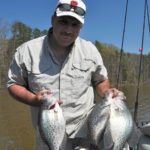
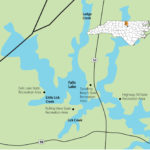
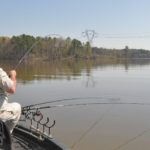
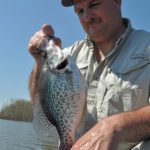
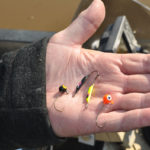


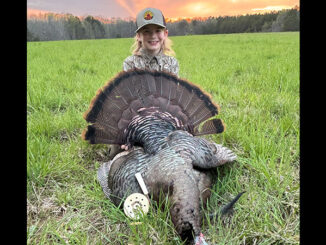

Be the first to comment